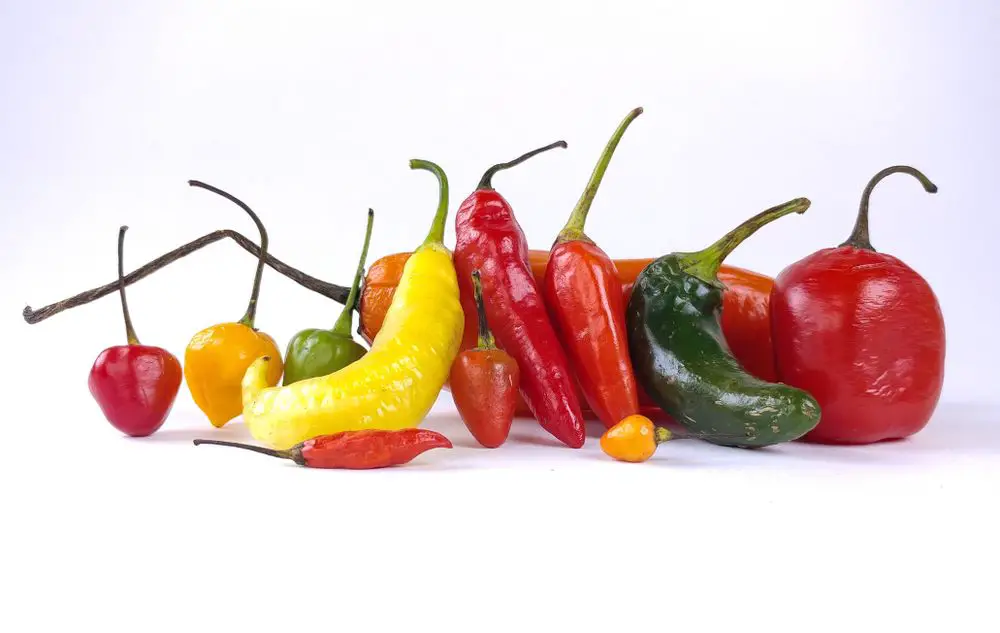It is no doubt that peppers are like superheroes in the kitchen because they can stimulate your appetite with their hot and sweet taste.
The aroma of peppers when cooking is one of the best scents you could smell in the world. But how do you grow them?
The best types of peppers to grow mentioned in this section are Jalepeno, Serrano, Cayenne Pepper, Habanero, Ghost Pepper and Shishito. Some like it hot – some don’t.
Most people love to grow peppers in their backyard where they can just pluck a single pepper or two whenever they need it.
Growing peppers from scratch requires great knowledge for starters to have a better yield. Thankfully, this article will provide you with all the necessary information on how to grow your pepper from hot peppers to sweet peppers.
Before anything else, there are so many types of peppers in the world and the varieties chosen for this segment are easy to grow and, most importantly, taste good! You better get your pen and notebook because you have a lot of noting to do.
What Are the Best Types of Peppers To Grow For Beginners?
The peppers mentioned in this section are ranked from hot to sweet to give you enough options for what to grow in your garden. Continue reading until you find the suitable pepper for you!
1. Jalapeno
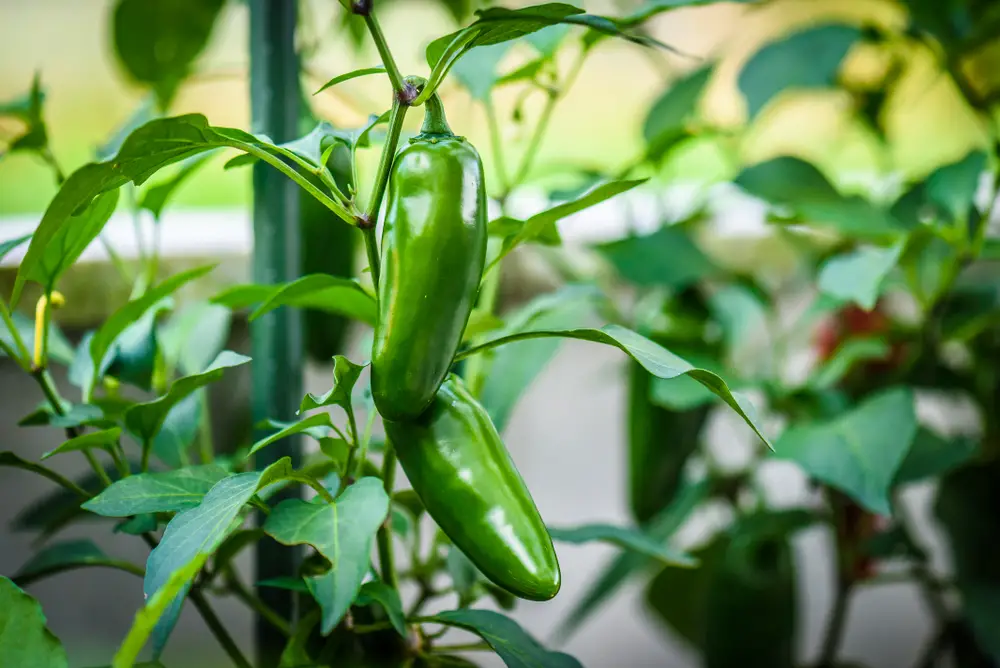
One of the classics. This type of pepper is known for its low to medium spiciness, so most people love them. They are widely used in many dishes because of their heat level and crunchiness.
Above all, they have a good yield so they better be included in this segment.
Moreover, Jalapenos can grow for up to 2 to 3 feet and the actual pepper can reach medium size only but it is nevertheless bursting with rich flavors.
They come in different colors ranging from green, yellow, and red. They are also not demanding in terms of caring and maintenance so that’s a win right there!
But remember that it isn’t all about rainbows in gardening. While it may be true that jalapenos are good yielders, it is not guaranteed all the time so better keep your expectations at a minimum.
But they remain to be a low maintenance crop so that should make up for it.
Jalapenos are good for pickles, salsa, hot sauce, and stir-frying. You better try these things after you harvest your jalapenos.
2. Serrano Peppers
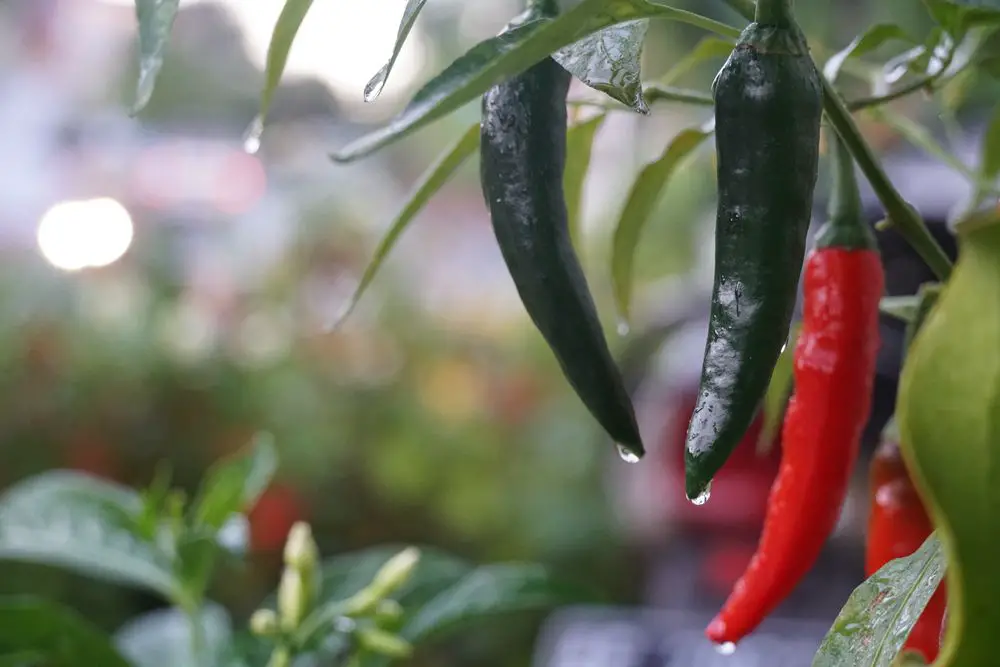
Second on the list is the serrano peppers. They are slightly hotter than jalapenos mainly because serrano peppers don’t have a low heat level, unlike jalapenos.
They keep their heat level at medium, making it a good choice for people with average heat tolerance.
The downside, however, is that serrano peppers will have limited dish applications whereas jalapenos having low to medium heat levels makes it available for a variety of dishes.
Nevertheless, both peppers are unique, and it is up to people what pepper they prefer to eat.
Furthermore, serrano peppers can grow up to 2 to 3 feet long and the actual serrano pepper can grow slightly smaller than jalapenos.
They are also low maintenance and a good yielder like jalapenos. Interestingly, serrano peppers are resistant to pests unlike any other varieties, which is a huge advantage.
Moreover, serrano peppers are typically harvested bright green and gradually turn red when ripened.
You can play around with the changing of colors of the serrano peppers by adding them to any dishes you want.
However, serrano peppers also need adequate nutrients to grow despite being low maintenance.
Just provide them enough water, sunlight, and fertilizer and you have yourself loads of serrano peppers when harvest season comes.
3. Cayenne Peppers
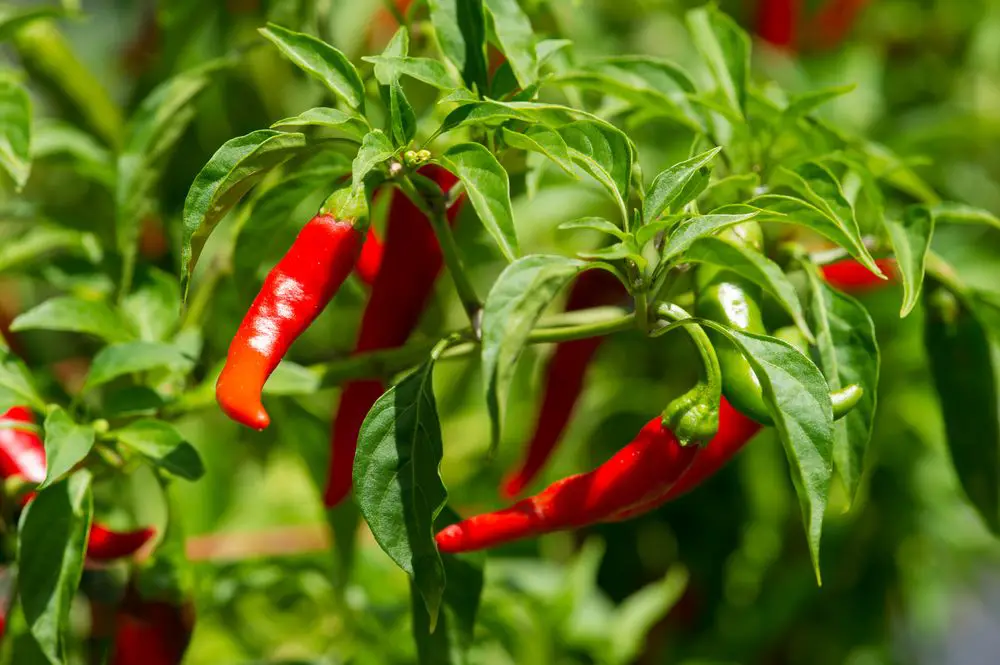
If you want to spice things up a bit, you better get your hands on cayenne peppers.
They are slightly spicier than serrano peppers and this is a great choice if serrano peppers can’t hit the right spot in your heat tolerance.
Cayenne peppers are slightly thinner and longer than serrano peppers and they usually have curves in their body.
They can grow for up to 4 to 6 inches and this is the time to harvest them. Usually, you can harvest cayenne peppers when they age about 70 to 80 days.
Moreover, cayenne peppers have a wide number of uses, particularly in Mexican and Asian cuisines. They are sometimes turned into powders for a better food experience.
Additionally, cayenne peppers are rich in vitamin A, B6, E, and C as well as riboflavin, manganese, and potassium. They are easy to grow and produce a good yield.
Not only are they healthy but they are also low maintenance just like the jalapenos and serrano peppers.
4. Habanero Peppers
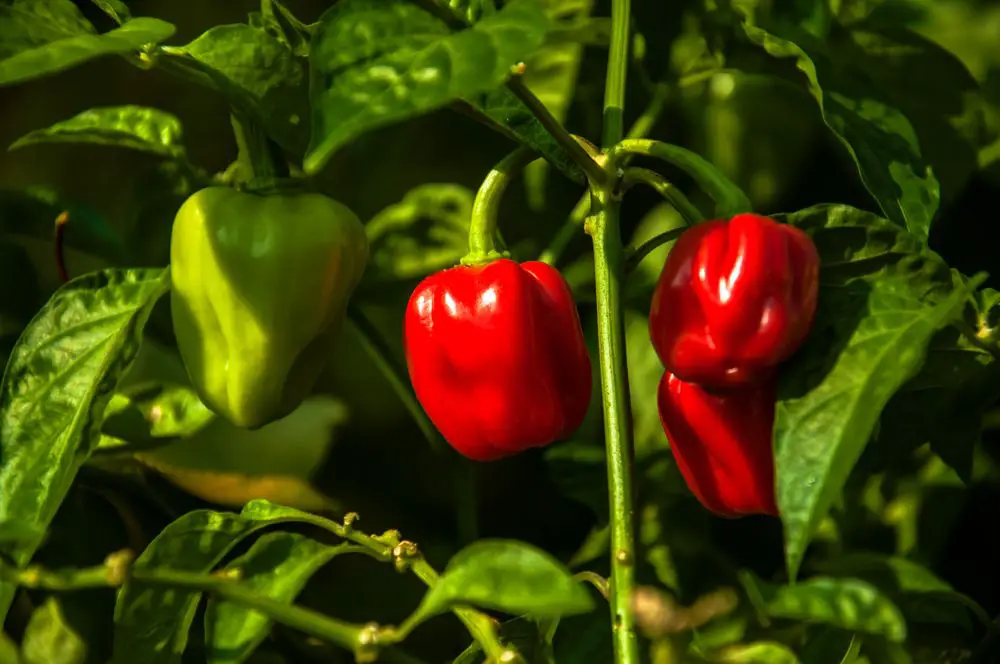
Another pepper to grow at home for beginners is the habanero variety. They are pretty common and most of all, delicious and spicy.
But habanero peppers are not super spicy, their heat level is right around the middle between extremely spicy and not spicy.
Suffice it to say, habanero peppers are enough to satisfy one’s heat cravings without burning someone’s mouth. They also have a little sweetness in them and they are highly fragrant. This is what makes habanero peppers popular.
Moreover, habanero pepper’s plant size can reach up to 3 to 4 feet while the actual habanero pepper can grow from small to medium in size. They are low maintenance and productive so that makes them perfect for beginners.
Habanero peppers are great for homemade sauce and other hot dishes. They have a lot of varieties like the “snow white” variety which is fairly easy to grow and extremely productive.
You should check them out and try them for yourself.
5. Ghost Peppers
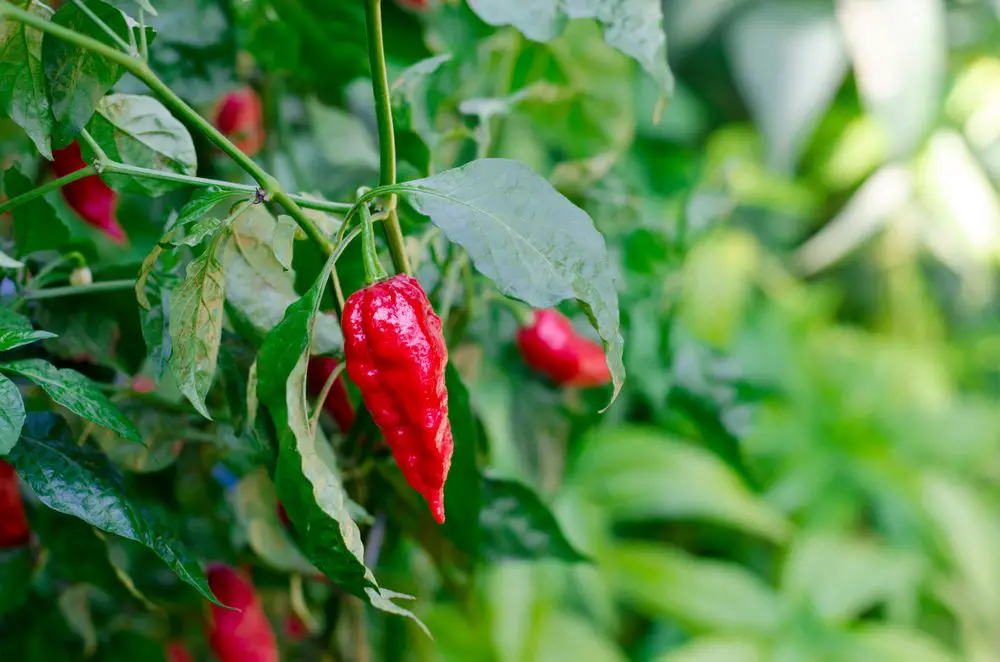
Now we jump to the significantly hotter version of peppers—ghost peppers. They are one of the world’s hottest peppers and surprisingly enough they are easy to grow!
That is why ghost peppers are included in this segment.
But you have to hold your horses because this one is burning with spiciness.
Well, if you can take the heat level then nothing holds you from growing them in your garden. They are easy to cultivate and extremely productive as well but require a little more maintenance than the other peppers in this segment.
The plant size of ghost peppers can grow for up to 3 to 4 feet and the actual ghost pepper can reach medium size.
The catch, however, is that ghost peppers don’t germinate fast if the seeds you used are not the best quality seeds.
Make sure to use quality seeds and they will germinate for about 5 days long.
Also, ghost peppers, one of the superhot peppers, have a longer growing season and this is true with other superhot peppers as well.
Expect to wait around 90-100 days before having your first harvest of ripe ghost peppers.
This is not a deal-breaker because ghost peppers are still easy to cultivate, you’ll just have a longer waiting period compared to other peppers.
6. Shishito Peppers
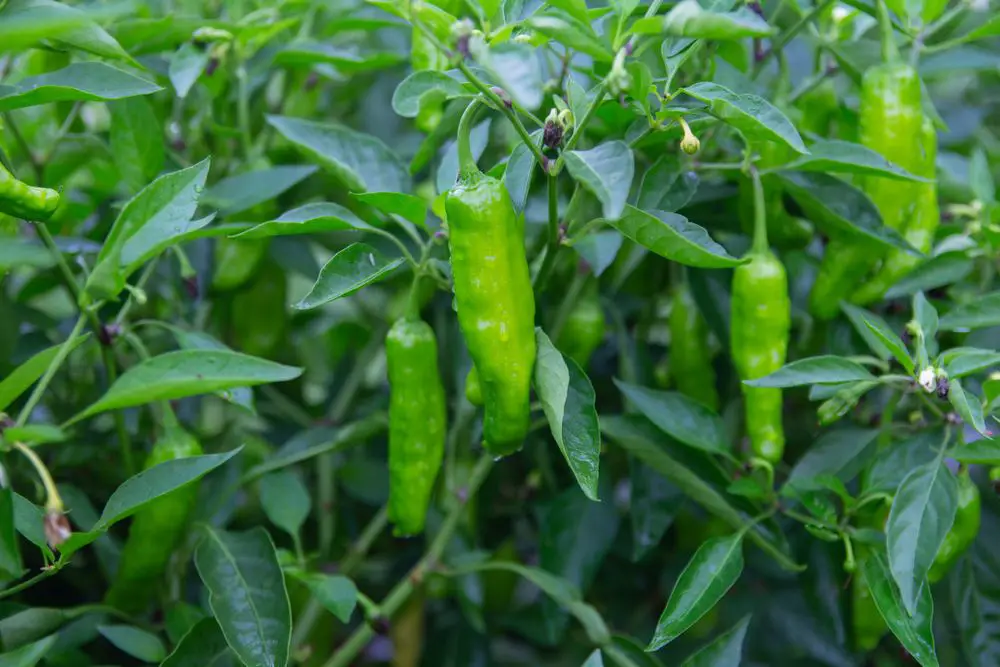
If hot peppers are not your type, then you better watch out for Shishito peppers. Shishito peppers are Japanese frying peppers known for their non-heat taste and super crunchy texture.
They are perfect for pan-fried side dishes because of their texture and delicious taste.
Final Thoughts on the Best of Peppers To Grow For Beginners
We’re off to the Potting shed to decide where we’re going to plant our peppers and dream about what kind of innovative meals, we’ll be cooking with the peppers soon.
Jenny Marie
Tribal Writer
Edited By
Patricia Godwin

